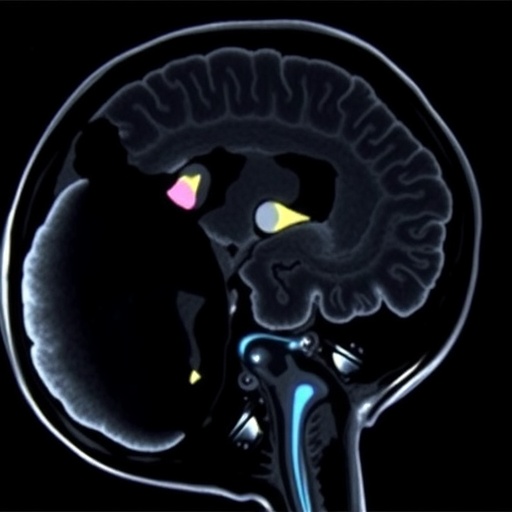In recent years, advances in prenatal imaging have revolutionized the way clinicians approach congenital anomalies, shifting the paradigm from reactive postnatal treatment to anticipatory and individualized prenatal care. One area that has particularly benefited from these developments is the evaluation and management of fetal omphalocele, a complex congenital defect involving abdominal wall herniation of viscera outside the fetal body, often protected by a membranous sac. While prenatal ultrasound remains the mainstay for initial diagnosis, fetal magnetic resonance imaging (MRI) has emerged as a formidable tool offering unparalleled soft tissue resolution and volumetric assessments, dramatically enhancing prognostic accuracy.
Fetal MRI’s strength lies in its ability to go beyond mere structural visualization; it offers quantifiable data crucial for preoperative planning and parental counseling. Unlike ultrasound, MRI provides high-contrast, three-dimensional imaging that allows clinicians to precisely delineate the extent of organ herniation, an essential marker in predicting neonatal outcomes. Specifically, the percent of liver herniation into the omphalocele sac is a critical determinant of morbidity and mortality, as the liver’s involvement correlates with pulmonary hypoplasia and respiratory compromise after birth.
Moreover, the volumetric analysis of fetal lung tissue enabled by MRI represents a game-changer in perinatal management. Measuring fetal lung volumes with accuracy permits prediction of pulmonary hypoplasia severity, which often drives decisions regarding the timing and mode of delivery. This prognostic capability affords neonatologists and surgeons an opportunity to tailor perinatal interventions precisely, potentially reducing respiratory complications that historically have led to increased mortality in affected neonates.
Beyond anatomical assessment, fetal MRI offers comprehensive screening for additional congenital anomalies frequently associated with omphalocele. These can include cardiac malformations, central nervous system anomalies, and chromosomal abnormalities, all of which significantly impact postnatal management strategies and long-term prognosis. Identifying these coexisting conditions prenatally empowers multidisciplinary teams to customize care protocols, optimize resource allocation at delivery, and prepare families for the challenges ahead.
This integrated imaging modality also influences surgical planning—a decisive factor in determining not only when to operate but how to approach repair. Detailed imagery guides surgeons in sizing the defect, assessing abdominal domain, and anticipating potential complications such as abdominal compartment syndrome. As a result, surgeons can strategize whether primary closure is feasible immediately after birth or if staged repair with temporary silo placement is warranted.
Coupled with real-time ultrasound findings, fetal MRI enhances clinical decision-making processes surrounding delivery. For example, high-risk cases with significant liver herniation and diminished lung volumes may benefit from planned cesarean delivery to mitigate birth trauma and optimize neonatal stabilization. Conversely, more favorable presentations might permit vaginal delivery, reducing maternal morbidity associated with cesarean sections.
In clinical practice, this technological synergy leads to a more nuanced, patient-centered approach whereby prognostic clarity not only informs medical teams but also strengthens dialogues with expectant parents. The ability to communicate detailed insights on expected morbidity and survival probabilities fosters informed consent and psychosocial preparedness, an often overlooked but vital component of perinatal care.
At present, the integration of fetal MRI into routine prenatal protocols for omphalocele remains limited, primarily restricted to tertiary centers with access to advanced imaging facilities and multidisciplinary expertise. However, the interest in widespread adoption is burgeoning, fueled by accumulating evidence of improved neonatal outcomes linked to MRI-aided prenatal evaluations.
Looking to the future, researchers advocate for the establishment of multi-institutional studies designed to collect expansive datasets, thereby enhancing the reliability and statistical power of predictive models derived from fetal MRI. Such collaborations could standardize imaging protocols, refine quantitative assessment techniques, and validate imaging biomarkers predictive of neonatal morbidity and mortality across diverse populations.
Furthermore, advancements in artificial intelligence and machine learning hold promise for automating the segmentation and volumetric analysis of fetal structures on MRI scans. These innovations could accelerate image processing times, reduce interobserver variability, and bring sophisticated imaging analytics within reach of more clinical settings.
In synthesizing these developments, it is evident that fetal MRI transcends traditional imaging roles, evolving into a pivotal prognostic tool in the management of larger and more complex omphaloceles. By marrying anatomical precision with predictive prowess, this modality redefines prenatal care pathways, proffering hope for improving survival rates and quality of life for neonates born with this challenging condition.
This paradigm shift also underscores the critical importance of multidisciplinary collaborations encompassing radiologists, perinatologists, pediatric surgeons, neonatologists, and genetic counselors. Each discipline contributes unique insights that, when integrated, enable a holistic approach to both prenatal diagnosis and individualized management plans.
In conclusion, fetal MRI stands on the cusp of becoming standard of care for prenatally diagnosed omphaloceles, promising not only enhanced diagnostic capabilities but also improved therapeutic outcomes. Its role extends beyond the confines of imaging, fundamentally enriching the continuum of care from in utero assessment to postnatal surgical management and long-term follow-up.
As ongoing studies refine its applications and technological advances broaden accessibility, fetal MRI’s prognostic abilities will undoubtedly reshape clinical practice. This will ultimately translate into more informed parental counseling, optimized delivery strategies, and tailored surgical interventions—culminating in better morbidity and mortality profiles for the most vulnerable infants.
The integration of fetal MRI marks an exciting frontier in maternal-fetal medicine, reflecting a broader trend toward precision medicine and personalized care in perinatal health. By harnessing its full potential, clinicians can anticipate not only diagnosing anomalies earlier but also proactively orchestrating comprehensive care plans that span the crucial transition from womb to world.
—
Subject of Research: The prognostic utility of fetal magnetic resonance imaging in the prenatal diagnosis and management of omphalocele.
Article Title: Beyond the womb: prenatal MRI’s prognostic abilities for morbidity and mortality in neonates with omphaloceles.
Article References:
Manohar, K., Mesfin, F.M., Belchos, J. et al. Beyond the womb: prenatal MRI’s prognostic abilities for morbidity and mortality in neonates with omphaloceles.
J Perinatol (2025). https://doi.org/10.1038/s41372-025-02321-1
Image Credits: AI Generated
DOI: https://doi.org/10.1038/s41372-025-02321-1




